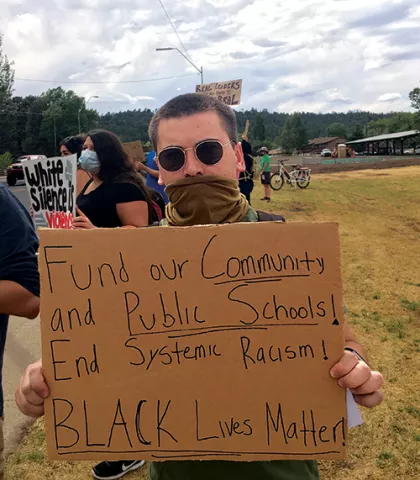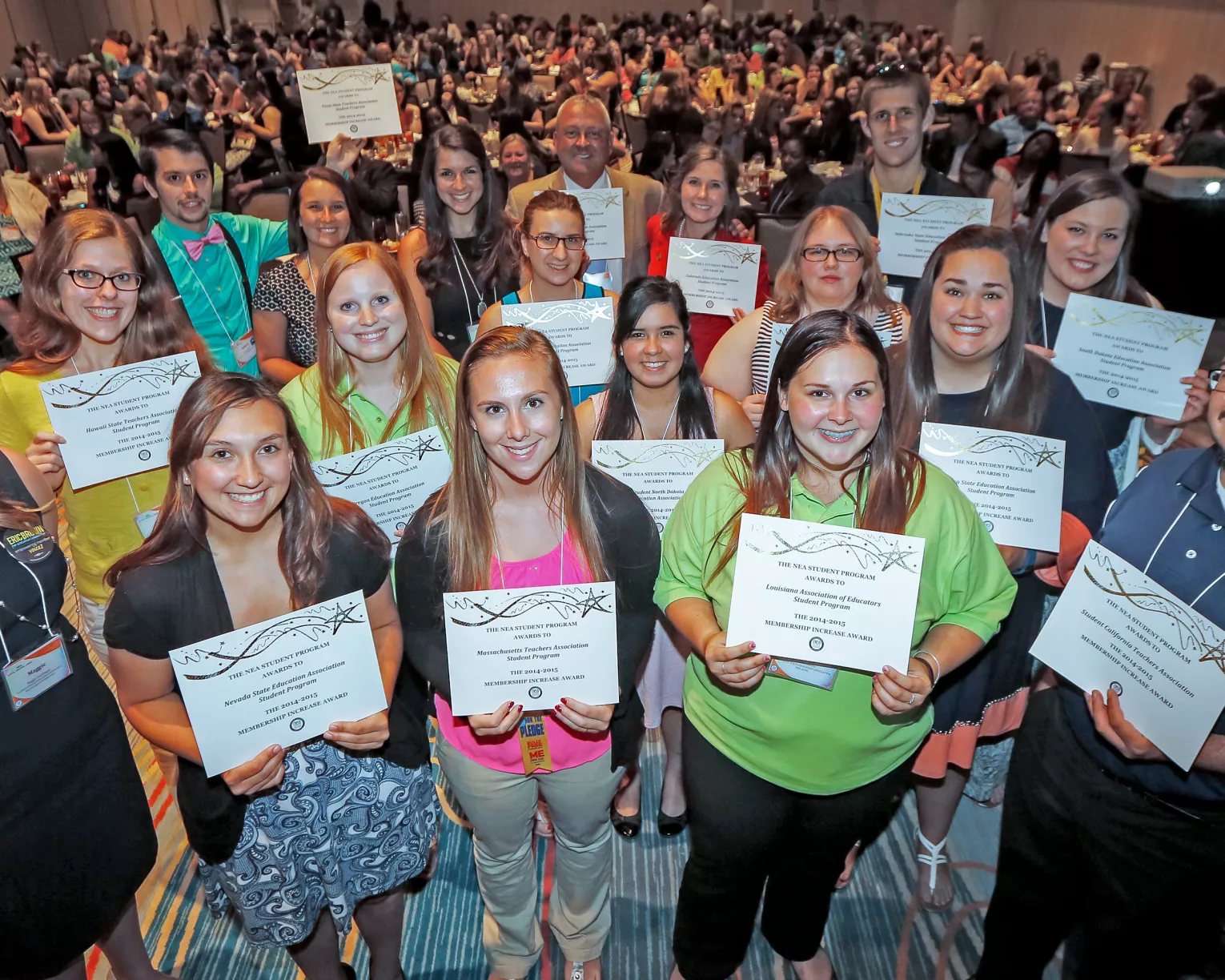In one of the largest educator walkouts in history, tens of thousands of teachers and educational support professionals across Arizona took to the streets in April 2018 to call attention to the chronic underfunding of their classrooms. Like other #RedForEd protests across the nation, Arizona’s educators helped secure a long overdue pay raise and critical new funding for education programs.
For Kimo Homer, who was a first-year college student at the time, the walkout was an eye-opener. Homer had recently moved from his native San Diego to study education at Northern Arizona University, in Flagstaff.

“When I was growing up and going to school, we would see teachers outside the school protesting now and then,” he recalls. “But nothing like this. It highlighted to me how important it was to be part of the union. I just saw how unions can collectively take action and demand something that they should have a right to: professional pay. The protest drew me in, it was inspiring.”
The #RedForEd movement has been fueled largely by the energy and commitment of new educators. This generation is entering the workforce in the midst of a pandemic, which hit just as the public education system was beginning to recover from the Great Recession
(2007 – 2009).
“We’ve have been through so much. We’ve watched schools be attacked and underfunded,” Homer says. “That’s why we value a common entity where our voice can be heard. That what we’re all looking for.”
Our Fight as Well
Homer is just one of the 50,000 who have found that megaphone in NEA’s Aspiring Educators (AE) program, which provides pre-service teachers with resources and networks that will empower and support them throughout their careers. The program is built around four core values: educator quality, community engagement, social justice, and political activism.
For Cameo Kendrick, chair of the AE program, these four values are a whole—equal parts that are all in service of the nation’s students. And most NEA members agree: A recent survey of nearly 2,000 K–12 teachers reveals that 88 percent of respondents believe they have a professional obligation to address institutional racism.
“Our generation is very clear on that issue—these issues are linked,” says Kendrick. “You can’t have a great school without racial and social equity. … We see that as our responsibility and our fight.”
That includes embracing the mantle of proud union member. “We’re fighting for our students, for our profession, for our communities,” Kendrick says.
“We’ve have been through so much. We’ve watched schools be attacked and underfunded. That’s why we value a common entity where our voice can be heard. That what we’re all looking for.”
Other young workers agree. A 2019 Gallup poll found that millennials (born 1981 – 1996) are much more pro-union than older generations, and workers under 35 have been driving new union membership, according to the U.S. Bureau of Labor Statistics.
“Millennials graduated high school and college in the wake of the Great Recession, and many have experienced high student debt, years of high unemployment, low wages, and expensive health care bills,” says Kayla Blado of the Economic Policy Institute (EPI). “This has driven many to support and join unions.”

Furthermore, young people also tend to support pro-worker policies and the politicians who support them. According to the Center for Information and Research on Civic Learning and Engagement at Tufts University, over half of all voters under 30 voted in the 2020 elections, setting a new record. These voters overwhelmingly supported Joe Biden over Donald Trump by a 60 percent to 36 percent margin.
And younger workers are bearing the brunt of the pandemic’s deepening economic consequences—especially as efforts to deliver critical relief stalled on Capitol Hill for the entire second half of 2020.
Moving forward, the nation needs to ensure that lawmakers don’t repeat the mistakes they made after the Great Recession, when they prioritized tax cuts over education spending, ushering in a decade of austerity for public schools.
“The #RedForEd movement led to some important changes,” says Sylvia Allegretto, a researcher with EPI. “We’re going to need much more of this in the future and in the near future.”
Younger people “believe in allyships and grassroots organizing,” says Alexandria Toay, a special education major at Elmhurst University, in Illinois. “But often they don’t know where to go with it, where to be leaders. That’s where the union comes in.”
Never Too Young to Lead
At school, Toay quickly recognized that being an educator also means being an advocate. She joined AE at her school and, within a couple of years, became NEA Student Director at the Illinois Education Association.

“Getting involved in the union showed me how collaboration with administrators and the local school board affects your classroom,” she explains.
At the same time, activism isn’t for everyone, says Brittany Perrault, president of the AE chapter at Michigan State University, in East Lansing.
“It’s different for every person who joins,” she says. “We’re all looking for a personal connection, we’re looking for a support system of people who know what you are going through,” she says. “They may like political activity or the Black Lives Matter movement. But it could be about the community and resources that we’re not necessarily getting from teacher prep. The connection
is the foundation.”
“It’s about leadership as well,” adds Toay. “It may seem intimidating for younger educators, but we’re all driven by the same thing—creating an inclusive and enriching learning environment for every student. It’s never too early to lead. And you’re never too young."
Suggested Further Reading




